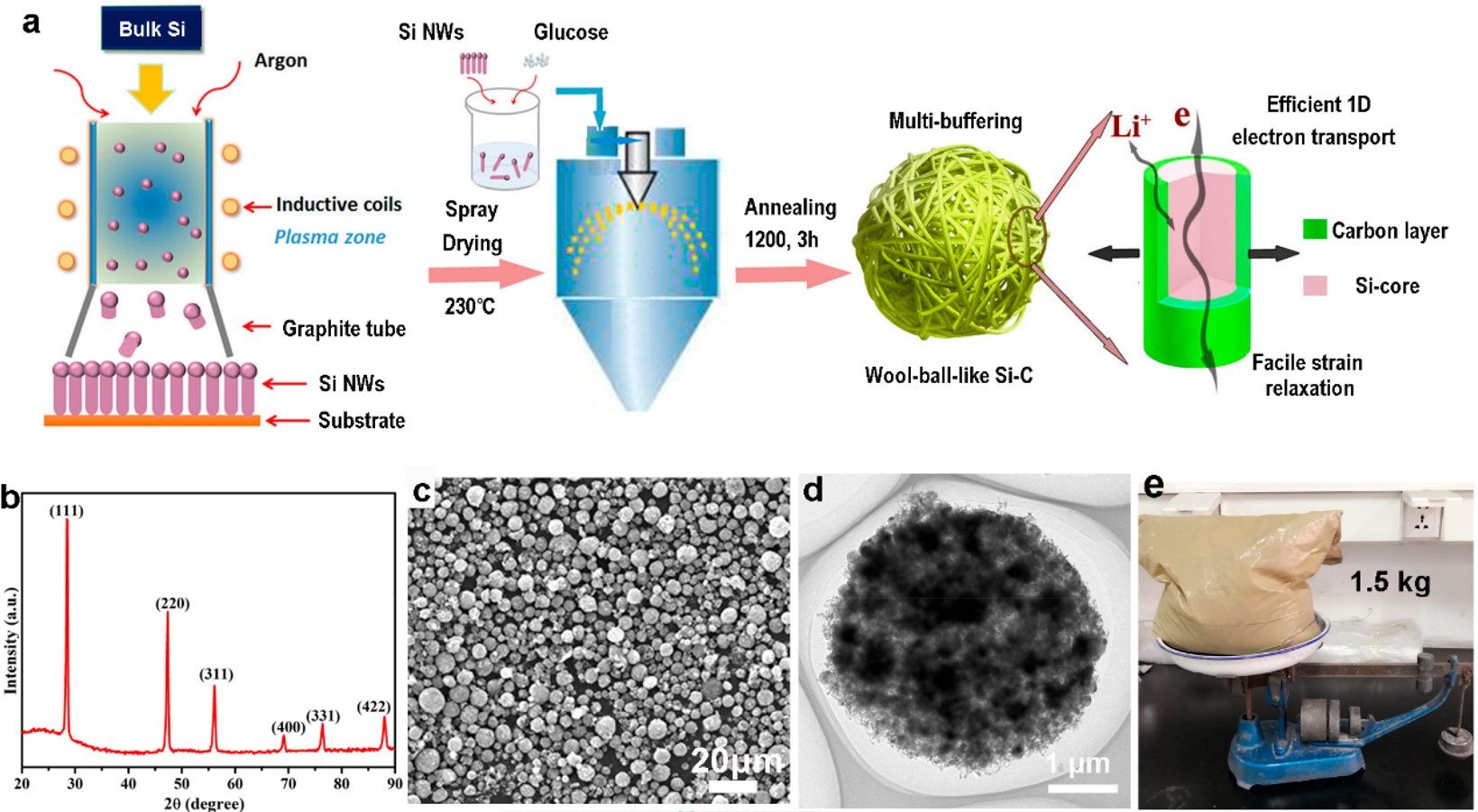Researchers from the Institute of Process Engineering (IPE) of the Chinese Academy of Sciences made important progress in the preparation of silicon nanowires (Si NWs) as anode materials by thermal plasma. The thermal plasma equipment can achieve mass production of kilogram Si NWs per hour, nearly matching industrial scales. And after combined with carbon, it could achieve a capacity of 2000mAh/g after 1000 cycles as anode materials. The relevant research results were published in ACS Nano (DOI: 10.1021/acsnano.9b03355).
The theoretical capacity of traditional commercial graphite anode materials is about 372mAh/g, which can hardly meet the current requirements of high-capacity batteries. Nano silicon is expected to be the next generation anode materials due to its high specific capacity. However, it is still a critical challenge to apply this material for industrialization because of low yield and high cost.
The research group led by Prof. YUAN Fangli from IPE has been working on preparation of special powder materials and equipment development of high-frequency induction thermal plasma for many years.
"In plasma preparation of nano silicon, we find that in the plasma reactor with different temperature gradients, products with different morphologies and structures are obtained. By introducing a hot wall reactor, prolonging the growth time of particles, silicon nanowires were successfully prepared," said HOU Guolin, the first author. Then Si NWs and carbon were further assembled to prepare multiscale buffering carbon-coated Si-C wool-balls (fig. 1).

Fig. 1 Synthesis and Characterization of the Si-C WBs Consisting of Si/C NWs (Image by HOU Guolin)
These wool-ball-like frameworks, prepared at high yields, nearly matching industrial scales, which can be routinely produced at a rate of 300 g/h. And as anodes, they show ultrastable lithium storage (2000 mAh/g for 1000 cycles). The prepared Si-C WBs can effectively buffer the volume expansion effect and withstand a certain external force to ensure the structure not destroyed for charge.
The structure design and large-scale synthesis could facilitate the practical applications of Si/C composites in lithium ion anodes, according to YUAN.
In their previous works, silicon nanospheres with a uniform shape and diameter of about 50 nm were prepared by high frequency induction thermal plasma device developed independently, and the research results were published in Journal of Materials Chemistry A and Nano Energy, respectively.
Media Contact:
LI Xiangyu
International Cooperation Office, Institute of Process Engineering, Chinese Academy of Sciences, Beijing 100190, P. R. China.
E-mail: xiangyuli@ipe.ac.cn
Tel: 86-10-62551358
 Search
Search




 京公网安备110402500047号
京公网安备110402500047号